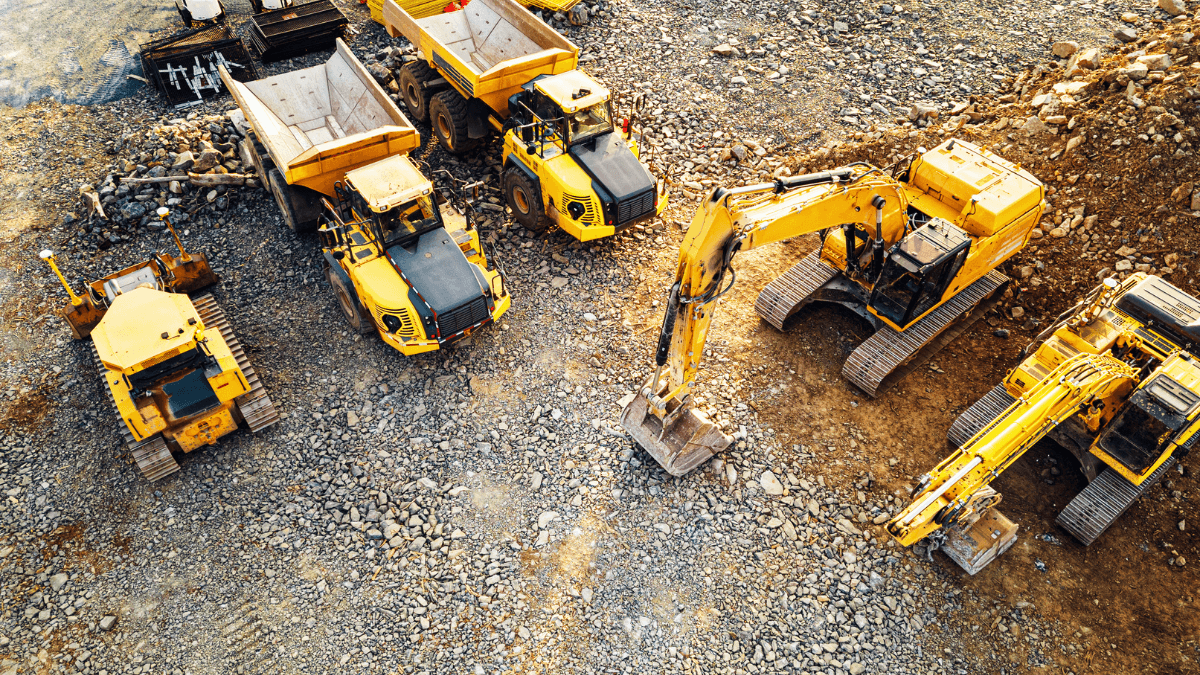Key Takeaways
- Simple maintenance and repairs before listing equipment for sale will boost its value.
- Timing your sale for peak construction season will secure better prices and more buyers.
- Digital tools for tracking maintenance streamline the selling process and provide buyers with detailed service records.
Selling construction equipment can be a complex task.
Of course, you want to sell it within a reasonable time and get a good price.
However, many company owners and managers often make mistakes that lead to the opposite result.
From not providing enough information on equipment to selecting the wrong time to sell—even the smallest missteps can delay the sale or reduce your profit.
That’s why today, we’ll explore seven common mistakes to avoid when selling construction equipment and share practical tips to help you ensure smooth sailing through the selling process.
Let’s get started with the first mistake.
In this article...
Not Providing Enough Information
When selling construction equipment, contractors make one common mistake: they provide incomplete or inaccurate descriptions of the equipment’s condition, specifications, or history.
A lack of clarity in these areas can raise red flags, leading to lower offers or even missed sales.
Think about it from a serious buyer’s perspective.
They typically look for key details, such as the equipment’s make and model, age, usage history, maintenance records, and any previous repairs.
Not providing this information can either deter interested parties or leave them skeptical about the offer’s integrity.
Consider a recent Craigslist listing for a 1987 Case 450 dozer.

While this dozer’s age (37 years old), make and model, operating hours, and price are presented, the phrase “in excellent condition” is, to put it mildly, an insufficient description.
When one reviews the related photos, this vague assessment can even have a counterproductive effect, raising doubts about the seller’s seriousness and reliability.
Despite equipment info limitations on Craigslist, it’s still possible for sellers to provide more detailed information or offer potential buyers the option to access or request additional records and images.
However, based on this ad, buyers can only speculate whether the machine has been well-maintained or might require costly repairs.
A clear, honest, and more detailed description—that also acknowledges signs of wear and tear—would be far more effective than claiming “excellent condition” while the photos suggest otherwise.
Overall, providing thorough equipment information upfront helps set realistic expectations, attracts serious buyers, and builds trust.
All this together potentially leads to a smoother, faster sale.
Overpricing or Underpricing the Equipment
This is probably the easiest mistake to make when selling construction equipment.
Why?
Because pricing used machinery is a delicate balancing act, influenced by fluctuating market conditions and how long you’re willing to wait.
Price it too high, and you risk driving buyers away; price it too low, and you may sell quickly but leave money on the table.
Let’s take the Case 450 dozer from our earlier example.
The seller is asking $24,000 for it, calling it the “best offer.”
However, even a quick internet search reveals several lower-priced options—and some are nearly 20 years younger!

Notably, the significantly newer dozer also has fewer operating hours (742) compared to the one from our Craigslist example (3,600).
Here, it’s also important to consider that transportation costs may increase the final price, depending on the buyer’s location.
Still, this doesn’t mean that the seller of a 1987 Case dozer has not overpriced their equipment.
This conclusion is based on several considerations, starting with the fact that the dozer is over 35 years old, which would normally depreciate its value.
Generally, older, outdated, or obsolete equipment is priced lower due to:
- material deterioration over time,
- gradual loss of operational functionality,
- potential lack of critical spare parts and components,
- impending non-compliance with safety or environmental regulations.
These parameters contribute to a diminished value, regardless of operating hours.
In our dozer’s case, 3,683 engine hours is relatively low for a machine of this age, which might suggest less wear and tear.
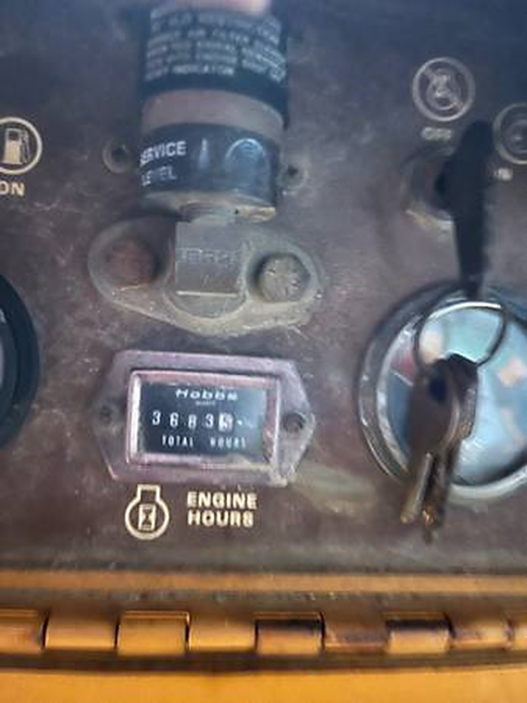
While this may enhance the resale value to some degree, it doesn’t offset the dozer’s age or the uncertainty regarding its overall condition.
Additionally, buyers today are increasingly informed and expect detailed documentation regarding the condition and service history of used equipment.
In our example, it’s hard to imagine that the seller can provide a comprehensive usage and maintenance history for the 1987 dozer.
Therefore, before advertising the equipment for sale, it’s essential to research the current market value and consider the equipment’s condition, usage, and depreciation to set a competitive price.
This is best achieved by consulting professionals or using online platforms that, in addition to helping you buy and sell used equipment, provide valuation services and auction estimates.
Boom & Bucket from Austin, Texas, is one of them:
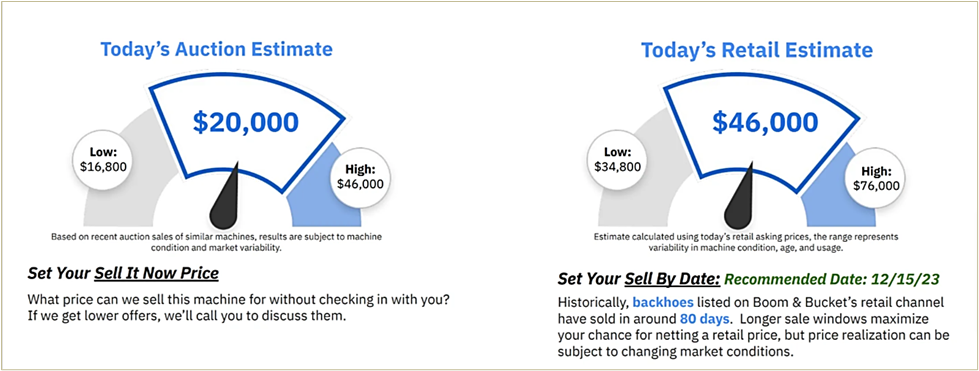
Their expert assessments and pricing guidance are based on market trends and your equipment’s condition.
This should help you avoid both overpricing and underpricing, allowing you to strike a balance that attracts serious buyers while maximizing your return on investment.
It’s a win-win for both parties.
Using Poor Quality Photos
What many contractors fail to consider is that, when selling used construction equipment, visual presentation is crucial.
Conversely, using low-quality or insufficient photos is one of the quickest ways to turn potential buyers away.
Why?
Because a few blurry, badly angled, or poorly lit images do little to instill confidence in the equipment’s condition.

To attract interest, it’s essential to provide a series of high-quality photos from multiple angles that accurately represent what’s being sold.
A well-lit, close-up photo, along with images of critical components—like the cabin, engine, and undercarriage—gives buyers a clear idea of the machine’s condition and helps build trust.

Notice that our good example tries to capture the entire machine and provides photos of the machine’s interior and videos of a machine walkaround and actual operation.
Additionally, by offering extensive photos and videos, you allow interested buyers to see the equipment from all angles, as well as watch it in action.
Of course, cleaning the machinery before its photoshoot can add appeal by making it look newer and well-maintained.
The same goes for good lighting and a simple, clear background.
Ultimately, clear, detailed visuals of equipment for sale enable potential buyers to make better-informed decisions.
This, too, increases the chances of a successful sale.
Not Using Multiple Marketing Channels
Another common mistake sellers of used equipment make is not using multiple marketing channels.
More precisely, relying solely on one channel, such as local contacts or word of mouth, can limit your marketing reach and reduce the odds of successfully selling your equipment.
Today, the options for selling used construction equipment, particularly online, are abundant, often overlapping, and sometimes confusing.
For more clarity, let’s see what the contractors surveyed for EquipmentWatch’s 2024 State of the Construction Equipment Economy said when asked about how they sell their equipment.
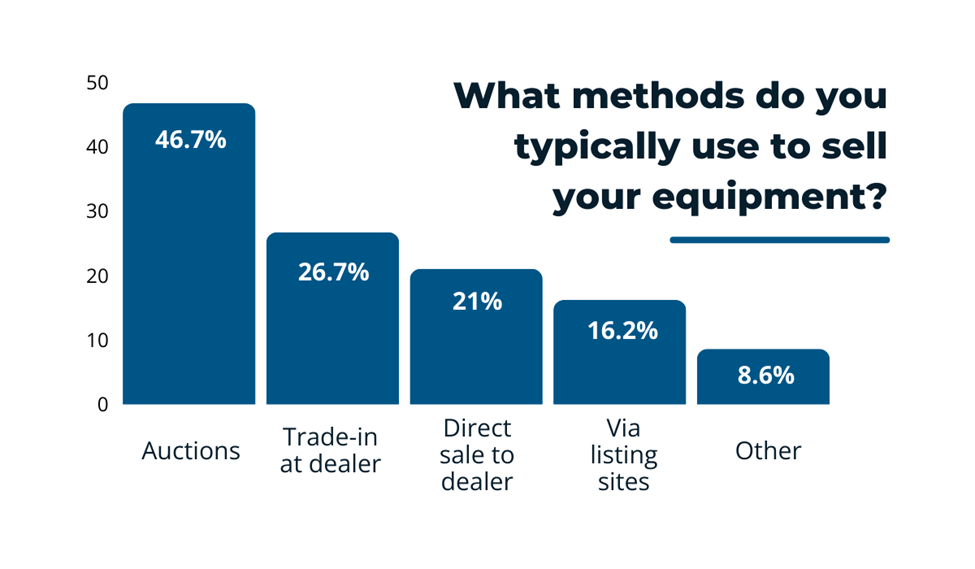
As illustrated, almost half of surveyed companies said they used online or live auctions through established auction houses to sell their equipment.
While such sales involve an auction organizer’s commission, they offer broad visibility and a faster transaction process, especially for high-demand machinery.
Auctions are particularly effective for sellers looking to offload equipment quickly, as they attract a wide audience of potential buyers, both local and international, who bid on it.
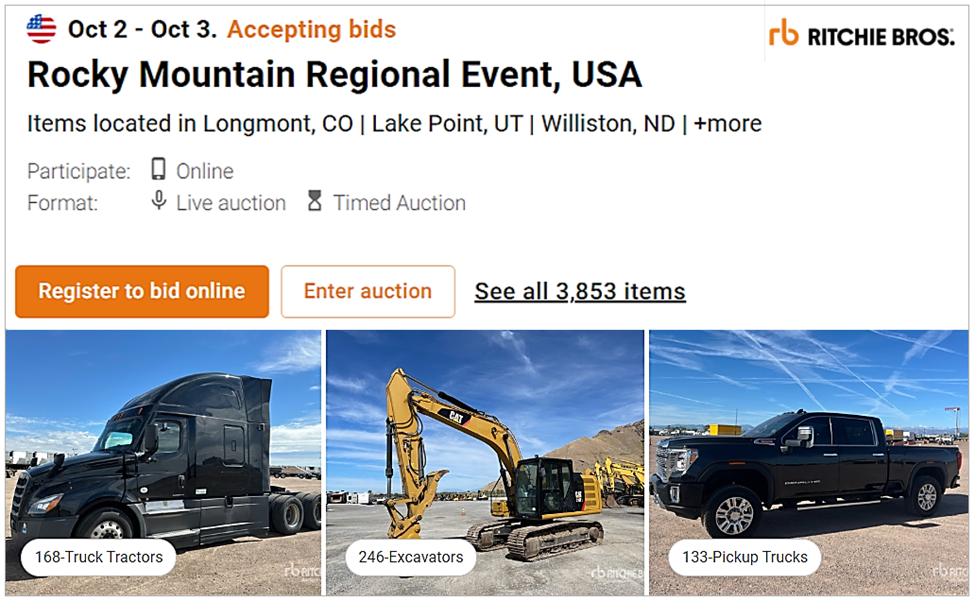
Online auctions are also gaining popularity due to their low organizing costs.
However, some buyers prefer live auctions with “inspection days,” where they can see and inspect the equipment firsthand.
The second most popular method—trade-ins at dealerships—is convenient for sellers upgrading to newer equipment.
By trading in old machinery, you can reduce the upfront cost of new purchases, though you might not get the highest value compared to other methods.
Similarly, direct sales to dealers provide speed and simplicity but typically result in lower payouts due to the dealer’s profit margin.
Although online listing sites are seemingly less common (16%), they can effectively reach buyers directly at a lower cost.
The point we’re making is to avoid relying on a single method.
Instead, combine them.
For instance, start by listing the equipment on digital marketplaces and in specialized or local groups on social media like Facebook and Instagram, typically at no cost.
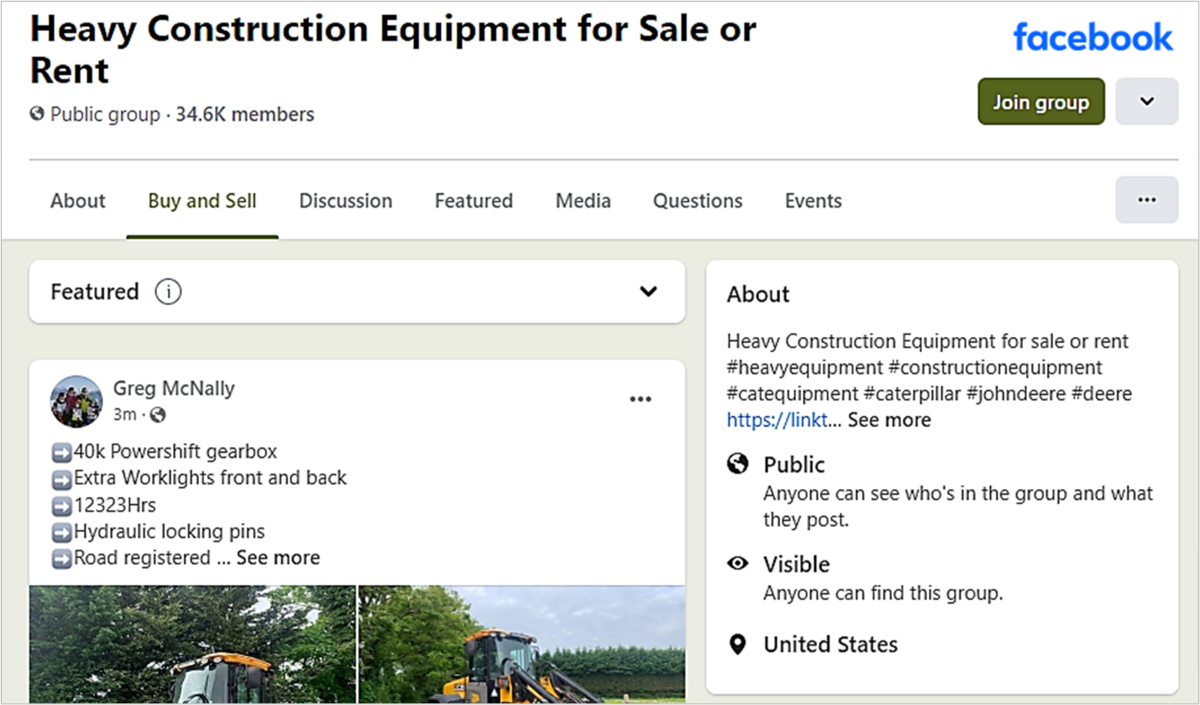
At the same time, reach out to colleagues, clients, and local businesses to gauge their interest.
Additionally, ask local dealers for quotes on your equipment, whether for a trade-in or a direct sale.
If these low-cost methods do not yield satisfying results or if you prefer a quicker sale, consider other options, such as online or live auctions or consignment services.
Not Performing Maintenance Before the Sale
Neglecting to perform routine maintenance or repair minor issues before selling your equipment can significantly reduce its value.
Buyers often hesitate to invest in machinery that appears neglected or poorly maintained, assuming it will require immediate repairs.
As a result, they may offer lower prices or avoid the purchase entirely.
So, before photographing your equipment, consider:
- fixing minor mechanical issues,
- replacing worn out or damaged parts,
- giving the equipment a thorough cleaning.
These actions can increase your equipment’s appeal and help you secure a better price.
Since regular maintenance is essential for both safety and performance, this should keep sale preparation costs low and the equipment ready for its next owner.
To stay on top of maintenance of your equipment and tools, consider using an asset tracking tool like our GoCodes Asset Tracking.
While we also offer real-time GPS trackers and other tracking devices, our primary tracking system consists of a mobile app and scannable QR codes.
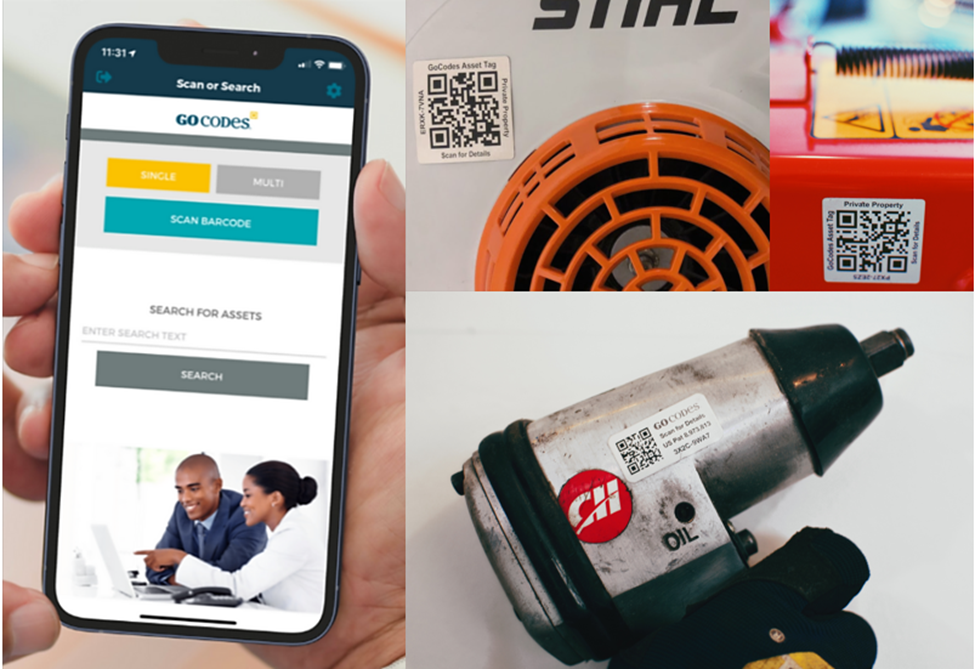
With GoCodes Asset Tracking’ cloud software, in-app scanner, and low-cost QR code tags, you can easily track your equipment’s whereabouts, who’s using it, and its maintenance status.
For instance, a worker who notices a potential issue with a machine or tool can scan its QR code tag with their smartphone and use the GoCodes Asset Tracking app to request inspection or maintenance.
Just like Joe did when a machine was leaking gas:

Moreover, when the QR code is scanned, the app automatically records the equipment’s location so you can quickly send the technician to the field.
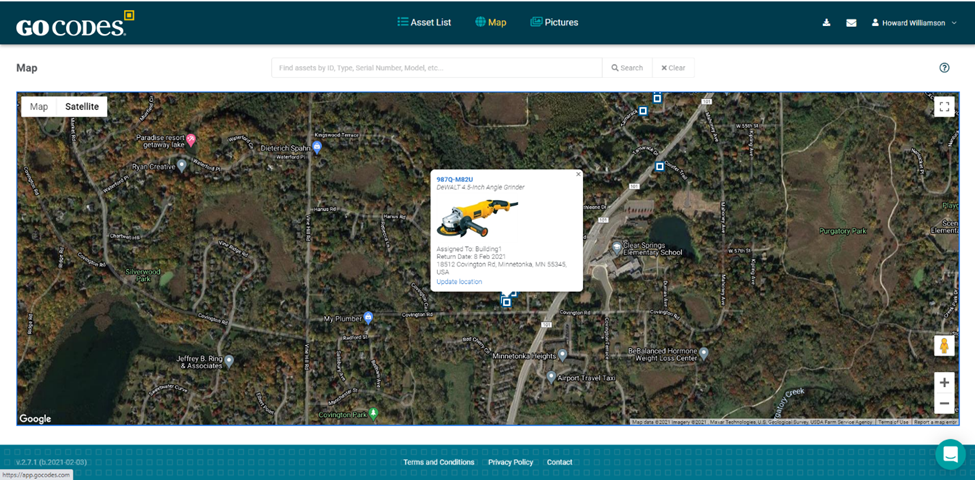
These and other GoCodes Asset Tracking features allow you to streamline the maintenance of your equipment, set servicing tasks, and track their performance.
Additionally, you can set automated in-app and email alerts that will notify you and assigned technicians when it’s time for maintenance.
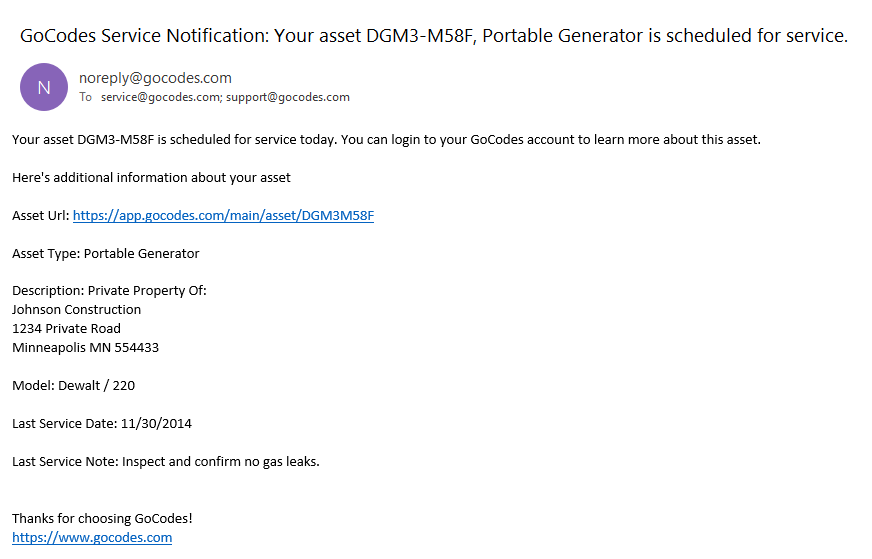
In any case, a quick look into the digital database of your equipment and tools will let you know whether an asset needs maintenance before it can be listed for sale.
For example, take a look at the electric wrench and the asset service field below:
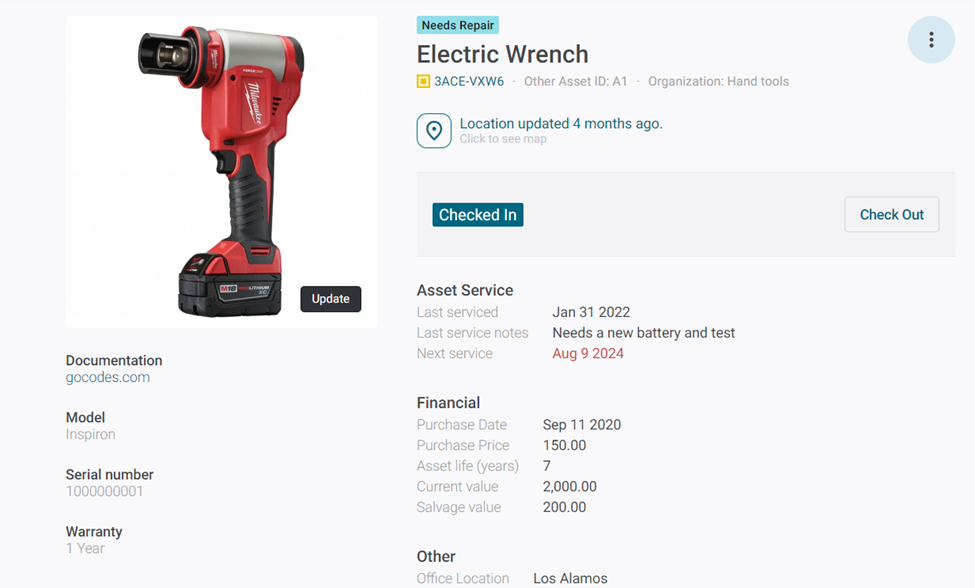
As you can see, this asset has a next service schedule, so if you want to sell it, it would be smart to first replace the battery and test its functionality.
To recap, regular maintenance, supported by asset tracking and management solutions, is essential for employee safety and operational efficiency, ensuring equipment is always ready for use—and for sale.
Additionally, by addressing basic repairs or simply cleaning the equipment before selling, you can boost buyer confidence and secure a better price.
Not Offering Detailed Maintenance Records
Buyers often want proof of proper maintenance and servicing.
A lack of maintenance logs can raise red flags, leading buyers to question the equipment’s condition.
To avoid this, sellers should provide documentation that shows a consistent maintenance history.
Historically, these logs were kept on paper or spreadsheets, but the most efficient way to ensure you have detailed maintenance records today is through a digital system.
This is where asset-tracking software like GoCodes Asset Tracking can help you again.
In GoCodes Asset Tracking’ database, you can record all maintenance and repair activities, along with other key equipment information, and have it all in one place.
Additionally, you can attach documentation like warranties, maintenance work orders, or third-party service reports to each asset.
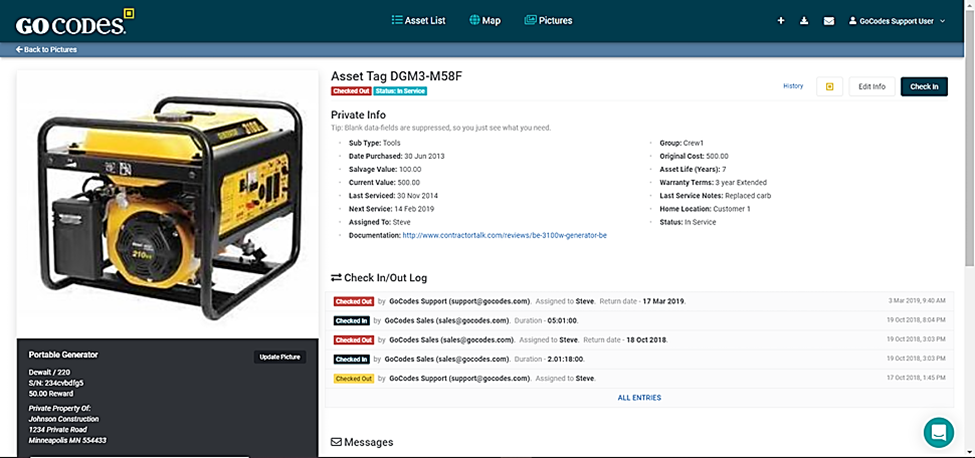
When deciding whether to sell equipment, you can review its usage, maintenance frequency, and repair history to make an informed choice.
Likewise, when advertising your equipment for sale, you can easily provide potential buyers with maintenance logs and other supporting documents.
This sends a strong message to potential buyers that the machinery has been well cared for, thus building trust and potentially securing a higher sale price.
Trying to Sell During Off-Peak Season
Lastly, selling equipment during off-peak construction periods can result in lower demand and reduced prices.
That’s because contractors typically seek machinery when they have active projects, which makes timing your sale crucial.
For example, equipment sales often dip in winter when fewer construction activities take place.
This pattern is reflected in the cost report from Engineering News-Record for the first quarter of 2024, which reveals slight drops in used equipment prices in January and February.
Samuel Pierce, sales analyst with EquipmentWatch, notes that this price drop is, in fact, normal and indicates stable pricing.

While this information is reassuring, it also suggests that selling your equipment in January or February may not be ideal due to lower demand.
As warmer months approach, demand increases along with more active projects.
Therefore, planning your sale during these peak construction periods can help attract more buyers and secure better prices.
Conclusion
After covering these seven common mistakes, it’s clear that successfully selling used construction equipment requires careful planning and attention to detail.
By staying on top of maintenance, keeping detailed records, and timing your sale wisely, you can maximize the value of your machinery and attract more buyers.
Mixing different sales methods and using the right digital tools can further streamline the selling process, helping you secure the best possible price for your equipment.
With this information at hand, you’re now better equipped to avoid these mistakes and make your sale a success.
Good luck!

